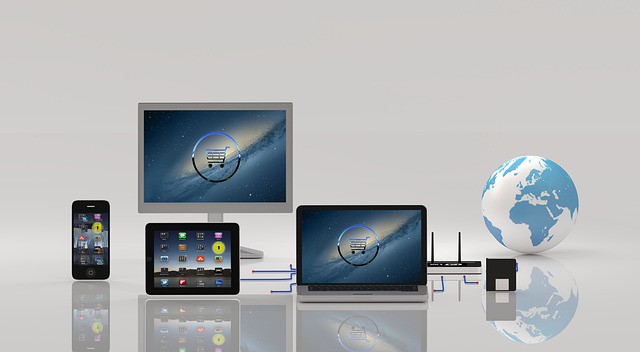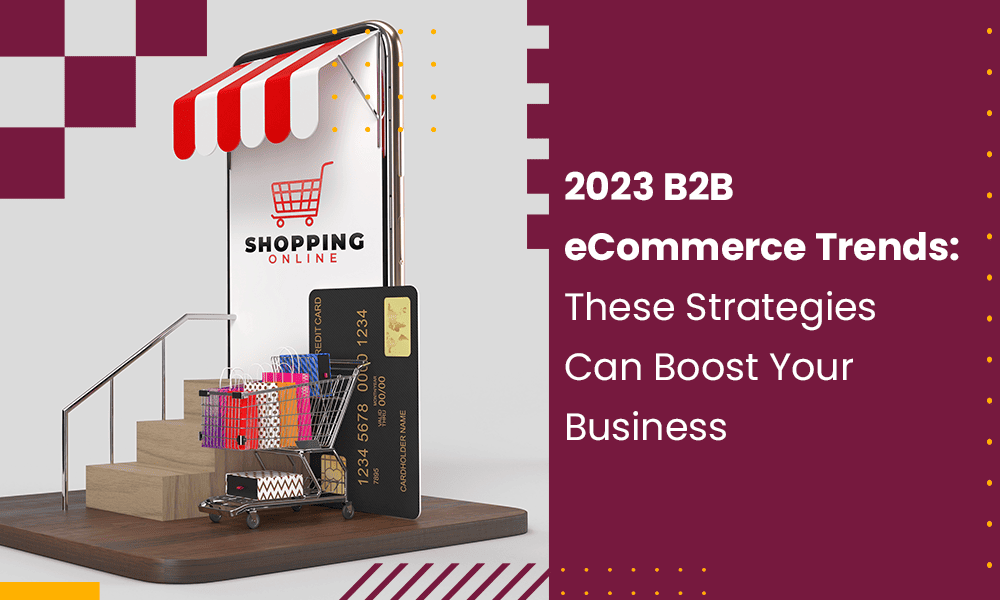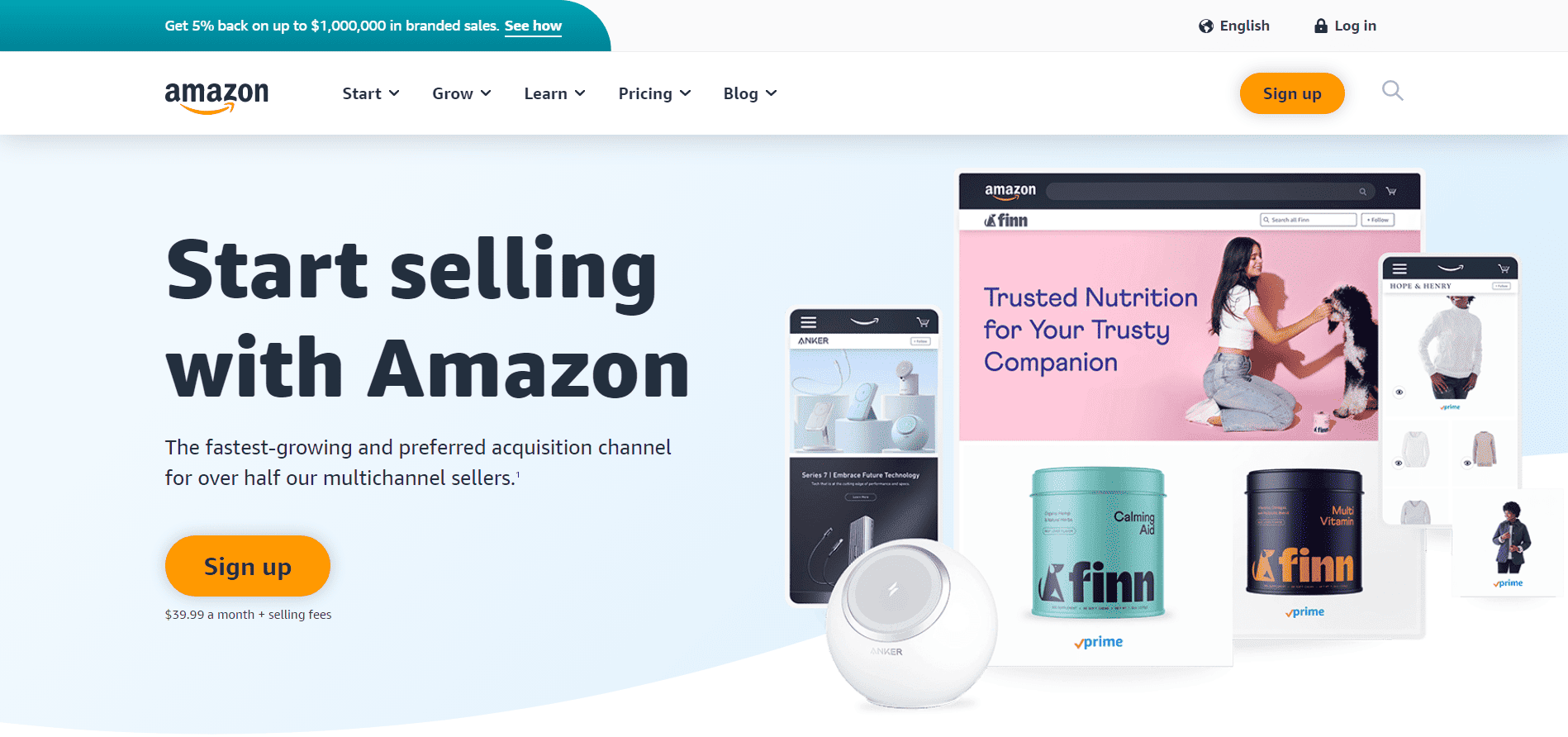The present-day B2B marketplaces are not what they used to be a few years back. COVID-19 brought a massive wave of digital revolution that changed the picture of B2B eCommerce and marketing. As people were bound to stay indoors and businesses were required to shut down their physical stores and offices, things went digital.
The global lockdowns gave B2B business owners the opportunity to understand digital channels in detail and explore this new space.
The result?
Today, most businesses are willing to take their marketing and sales to online marketplaces. The eCommerce market – which used to flourish with B2C businesses – has now become an indispensable part of B2B businesses as well.
A Salesforce report reveals that 57% of digital leaders believe online channels will contribute to more than half of all B2B sales revenue within the next two years. Further, some studies have also revealed that B2B eCommerce web pages, marketplaces, and login portals saw a growth of 17.8% in online sales in 2021. Thus, it won’t be wrong to say that eCommerce has become a must-have for almost every B2B business.
Whether you are an existing B2B business owner or are planning to establish your new business this year, knowing about the latest B2B eCommerce trends is a must! Knowing about these trends and preparing your marking strategy will help you boost your game, rise above your competitors, and boost sales.
So, without further ado, let’s get started!
Table of Contents
1. Automation and AI Will Help B2B Companies Save Costs
No matter what kind of business you own, figuring out the best ways to create high-quality products and services at low cost should always be your goal. While there are multiple ways to save costs, automation and AI have been emerging as the most promising option today.
Using digital channels to sell products is one of the most effective ways to cut costs. B2B companies can lean on AI technologies like self-service, unified solutions, and automated reorders to significantly raise efficiency and reduce the cost of placing and fulfilling orders. As per reports, almost 33% of online sellers have agreed that digital channels have greatly reduced their service costs.
Further, Machine Learning and AI algorithms can also be used to analyze complex historical data to get deep business and market insights at low costs. This can help businesses in coming up with better marketing strategies.
Read also: 7 Powerful eCommerce Marketing Automation Strategies + Tools
2. The Gap Between B2B and D2C Will Get Smaller
Another prominent B2B eCommerce trend that we will notice this year is the diminishing gap between B2B and D2C selling. Like several other changes, this change was brought by the pandemic. However, we will see its full implications this year.

Due to the restrictions of the COVID-19 pandemic, businesses were required to redefine their marketing strategy and sales methodology to match the market’s needs. To maintain their sales and revenue, B2B manufacturers and retailers of consumer items that don’t sell to shoppers directly started giving importance to D2C initiatives.
Similarly, multiple businesses supplemented their B2B selling initiatives by incorporating D2C marketing techniques into them and selling directly to the customer.
Due to the success of this model, more and more B2B businesses will be adopting this selling approach this year. As a B2B business owner, investing in an eCommerce solution that facilitates channel change and agility would be smart.
Read also: 19 eCommerce Best Practices to Win Customer Confidence
3. B2B eCommerce Will Face a Pressing Need to Focus More on Digital Security
The concerns for B2B eCommerce security are rising rapidly. Online threats like phishing, internal threats, ransomware, data threats, e-skimming, financial fraud, and SQL injection attacks can lead to the loss of sensitive data.

In fact, reports suggest that the global cost of a ransomware attack will reach a whopping $265 billion by 2031!
Thus, B2B business owners planning to explore the eCommerce landscape must invest in advanced cybersecurity tools and systems to protect customers’ sensitive data.
Read also: 6 High-Impact eCommerce Marketing Strategies to Try Now
4. We’ll See More Self-service Digital Sales Portals
During the pandemic, consumers started exploring eCommerce business platforms to satisfy that “in-store” craving. When the pandemic became more severe, the general public and businesses started depending on eCommerce platforms to make their purchases.
Due to the flexibility and ease that eCommerce channels offer, this trend will continue in 2023 as well.
This means that customers will want the sellers to offer them the same experience they get in offline buying. This includes personalized experience, seamless customer support via live chat, and more.
Read also: Advanced B2B eCommerce Strategies to Drive Growth in 2024
5. Augmented Reality and Virtual Reality Will Be Essential
Both augmented reality (AR) and virtual reality (VR) have the potential to alter how B2B companies conduct business fundamentally. These technologies have been in progress for quite a while and are witnessing slow adoption.

However, 2023 can be the year when B2B companies can experience the power of AR and VR technologies.
These technologies can be used to showcase the products and services of a business in a way that makes them appear real and tactile. This will allow customers to observe and “feel” them in their surroundings.
Additionally, augmented reality and virtual reality technologies enable B2B companies to adapt their products to meet the needs of every client.
In fact, AR can also help streamline several processes, like production, resolving issues, cutting production costs, assisting in product presentation, and more. Thus, investing some time and resources in exploring AR and VR technologies will be worthwhile this year.
Read also: The 15 Best B2B SaaS Marketing Agencies and Consultants
6. Integrated eCommerce Platforms Will Get More Traction
This year, B2B businesses will invest more money in eCommerce technologies and systems that directly benefit their company.
Some of these benefits include enhanced supply chain management, shorter sales cycles, increased sales, better order management, and improved back-office productivity.
Moreover, integrated eCommerce solutions that help businesses meet users’ demands and improve customer experience will also attract more investments.
Read also: 3 Best Online Marketplaces to Kickstart Your Business
7. Dynamic Pricing Will Be The New Pricing
Another upcoming B2B eCommerce trend is that of real-time pricing after contextualization. Real-time pricing empowers the suppliers to manage and set their product prices as per the current market conditions in real-time.
Contextualized real-time pricing helps enable suppliers to come up with competitive and dynamic pricing and foster customer loyalty, and boost their shopping experience across all channels.
This digital trend has the power to revolutionize the B2B eCommerce industry in the future as it will also enable businesses to offer personalized customer pricing and beat their competition.
To use this technology effectively, business owners must invest in eCommerce platforms that integrate product pricing, payment options, stock data, and supply chain management seamlessly.
9 Proven B2B Email Marketing Best Practices For Beginners
8. Third-party Marketplaces Will Have More Takers
In today’s digital age, almost every buyer – whether it is B2B or B2C – starts their product searches on eCommerce and marketplaces. Hence, having a presence on multiple third-party marketplaces is a must.
To keep up with this trend, B2B businesses will start selling their products on various third-party marketplaces in 2023 and beyond. Third-party eCommerce marketplaces offer businesses a chance to connect with global customers and introduce their products into new markets. This can go a long way in enhancing product sales.
Many businesses are now integrating their Amazon listings with tools like Feedonomics to give incentivized prices to registered customers. With the help of such tools, B2B firms can offer excellent discounts to their clients on making bulk purchases.
25 eCommerce Tools to Boost Sales in 2023
9. We’ll See More Automated B2B Buying and Selling
Automated buying and selling is another rapidly rising trend in B2B eCommerce. Automation enables quick services and seamless customer experiences, especially in a massive industry like B2B eCommerce.
This year, more and more B2B eCommerce businesses will rely on automation to improve their marketing, selling, and online transactions.
Automating accounts receivable, accounts payable, and reordering helps B2B businesses speed up their transactions. If you are still not investing in B2B eCommerce automation, this is the right time to do so!
Read also: eCommerce Content Marketing and Why You Need It
10. More Companies Will Add More Payment Options
For quite some time, B2C customers have enjoyed the benefits of multiple payment methods. On the other hand, B2B clients had limited payment options available to them.

However, this is about to change in 2023. To improve their customer service, many B2B eCommerce sites have introduced new payment methods to enable businesses to make payments in installments or credit payments.
This was introduced in light of the financial crises that many businesses faced during and after the COVID-19 pandemic. Introducing digital payment methods like credit cards, purchase orders, debit cards, checks, mobile wallets, and charge cards is changing the game for B2B businesses.
11. B2B Social Commerce Will Get More Traction
This is the age of social media, and its importance cannot be ignored today. As per reports, the number of social media users will reach a whopping 6 billion users by 2027!

These users also use social media platforms like Facebook and Instagram for making product searches and purchases.
More and more B2B businesses will be leveraging the power of social media and investing in social commerce. Social commerce removes the need for specialized websites for buying or selling B2B products and services.
Businesses simply need to find a social media platform that their target audience resonates with and design their digital marketing strategy accordingly.
Read also: The Best CMS for eCommerce
12. We’ll See More Headless Commerce and Digital Storefronts
The digital storefront of any business is like its online image. Many eCommerce brands ignored this aspect when they started implementing headless commerce. However, this can be a mistake.
While the trend of headless commerce will rise in 2023, B2B businesses should ensure to pay attention to their digital storefront.
Paying attention to both will help provide a more personalized customer experience.
Read also: 2023 B2B Marketing Ideas: What HubSpot, Flock Freight, and LinkedIn Can Teach Us
Determining eCommerce Trends That Are Right For You
Now that we have discussed the most popular eCommerce trends, the biggest question arises. Which eCommerce trend should you follow? Which one is the right fit for you?
Since many B2B eCommerce trends are emerging now, it becomes difficult to choose one that is ideal for you. However, you can make the right decision by deeply analyzing your industry, competitors, and customers.

Make sure always to conduct thorough market research to understand the changes going on in your industry. Further, evaluate how your competitors respond to these changes, analyze their strategies, and see what trends they follow.
Lastly, communicate with your customers, assess their buying behavior, and ask for their feedback to understand their expectations.
These three are the key components that will guide you in your B2B eCommerce marketing journey.
eCommerce Email Marketing Simplified: 15 Examples + Tips
In Conclusion
With the ever-increasing presence of digital commerce, B2B firms must focus on new eCommerce trends like personalized customer experience, social commerce, and advanced automation.
It is also important to design digital marketing and technological transformation strategies around customer needs to attain growth and success.
If any of these eCommerce trends stood out to you, let us know in the comments. You can also tell us what we forgot.
Also, if you are a small business owner and want to nail eCommerce marketing, we might have the right solution. Check out EngageBay — it integrates with Shopify too!



